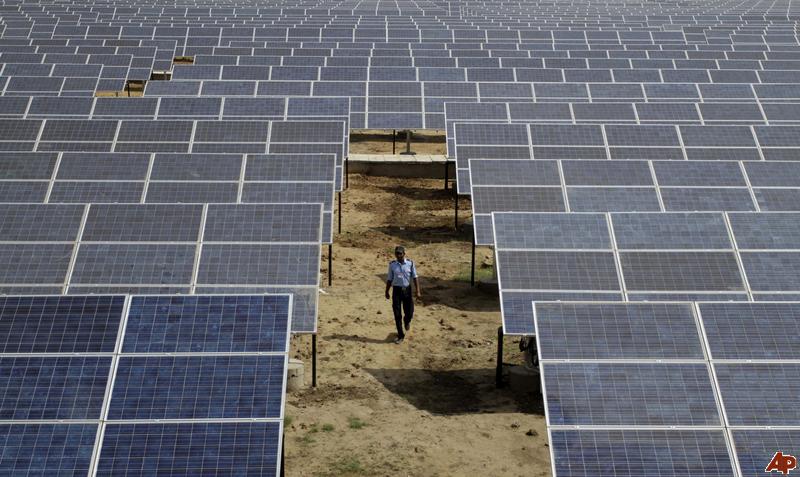With an eye to its ambitious, although not yet official, target of 100GW of solar capacity by 2022, the Indian government has this week identified 12 solar park locations capable of housing up to 13.75GW of capacity in the next five years.
Narendra Modi’s Ministry of New and Renewable Energy (MNRE) confirmed on Tuesday that it had found 12 of the 25 sites where it would establish grid-connected solar parks with capacities of between 500-1,000MW.
The confirmation comes as the government releases its first comprehensive assessment of India’s solar resource potential, which has been estimated it at 749GW – almost three times the total current power generation capacity of 255GW from all sources.
In an address to the Press Trust of India news agency, the joint secretary of the MNRE, Tarun Kapoor, said that Mizoram could be added to the list of interested states and provinces that had already agreed to host a solar park.
“Andhra Pradesh has proposed to have a 2,500MW park, Telangana 1,000MW, Madhya Pradesh is keen to have two parks of 750MW each, Karnataka a 750MW park, Rajasthan has identified land to set up projects as big as 4,000-5,000MW and Odisha and Punjab to have around 3,000MW each,” he said.
India’s plan to provide low-cost loans and grants to set up some of the world’s largest solar PV parks was first aired in August.
The overarching goal is to drive down solar costs and produce power from at least four of “ultra-mega” projects at a maximum of 5,500 rupees a megawatt-hour – about 32 per cent below the global average for solar, according to data compiled by Bloomberg, and well below the average for coal-fired power generation.
The land used for the projects will be subsidised by the government to keep project costs low. And state utilities will be expected to purchase at least 20 per cent of the power generated at the parks, leaving project owners free to export the remainder of electricity to consumers elsewhere in the country.
But this is just one part of Prime Minister Narandra Modi’s so-called saffron revolution, which also aims to ensure every home in the power-starved nation can run at least one light bulb by 2019 – an effort that will also powered by solar.
Modi, who after last week’s G20 told the Australian Parliament India was seeking “energy that doesn’t melt glaciers”, has continued to walk the talk on renewable energy since being elected PM earlier this year. And his newly appointed energy minister, Piyush Goyal, has been doing the same.
With a solar capacity target five times the size of India’s previous goal – and on par with China’s – renewables need to be a “self-sustained industry and not dependent on government subsidies”, Goyal said last week in New Delhi.
Last week, Bloomberg News reported that the US Exim Bank had pledged loans for as much as $1 billion to clean energy projects in India.
The loans would be given to Indian power producers who purchase equipment from the US and would have a repayment period of 18 years, the story said.
Meanwhile, PV Tech reports that consultancy firm Bridge to India has described the sub-continent’s 100GW informal target as ambitious but achievable.
In a briefing note it recommends an annual target of 5-7GW for the next few years with a push on distributed solar projects bolted on to that once a market structure could be developed to support it.










